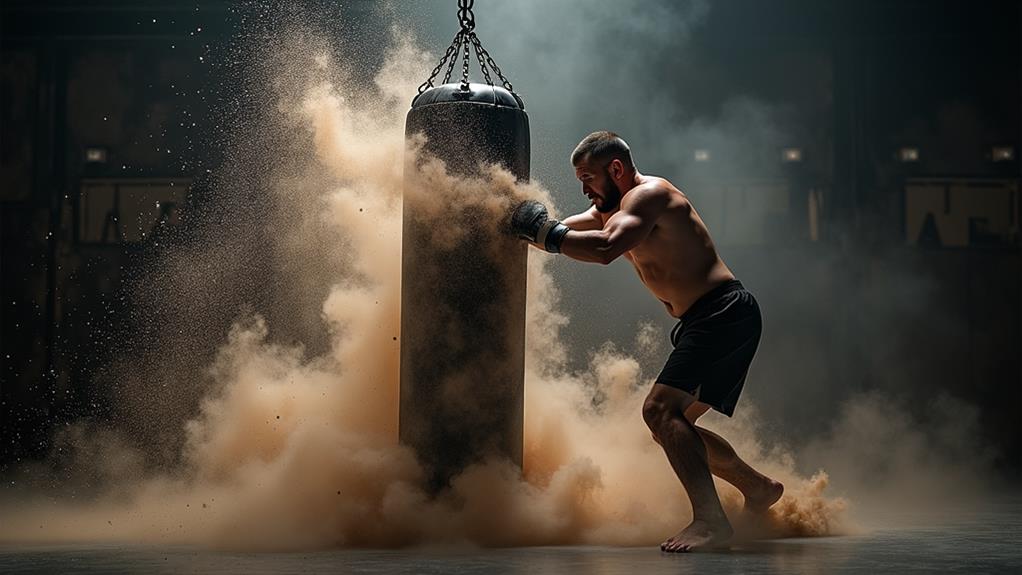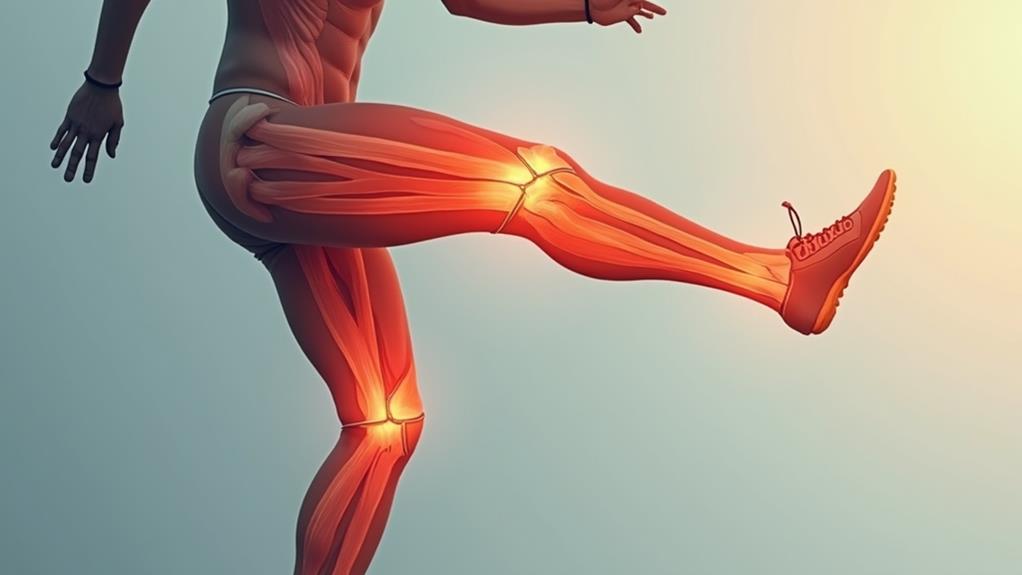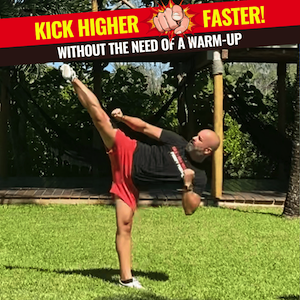To minimize your risk of injury and maximize your performance in martial arts, you need to incorporate a well-rounded conditioning routine that targets key muscle groups, enhances cardiovascular endurance, and boosts explosive power. You can start by building upper body strength with pull-ups and bent-over rows, which are essential for executing techniques in Brazilian Jiu-Jitsu and Muay Thai. You should also enhance your power with push-ups and develop explosive cardiovascular fitness with plyometric exercises and HIIT. By incorporating these exercises into your training, you'll improve your defense, technique execution, and overall martial arts performance – and that's just the beginning.
Building Upper Body Strength
Numerous martial arts disciplines, including Brazilian Jiu-Jitsu and Muay Thai, rely heavily on upper body strength to execute techniques effectively. As a martial artist, you need to develop a strong upper body to dominate your opponents and defend yourself.
To build upper body strength, incorporate exercises like pull-ups and bent-over rows into your conditioning workouts. Pull-ups target your back and arm muscles, essential for grappling and clinch work. Focus on controlled downward motion during pull-ups to enhance strength and stability.
Bent-over rows are also effective for building grip strength and back muscle, supporting essential pulling techniques and overall upper body stability in grappling scenarios. Incorporating these exercises into your martial arts training will improve your ability to execute techniques effectively and maintain a strong defense.
Enhancing Power With Push-Ups
Push-up power is a key component of martial arts training, and building it can greatly enhance your overall performance. By incorporating push-ups into your training routine, you'll develop upper body strength, particularly in your chest, shoulders, and triceps, which are essential for delivering powerful strikes. Proper form is vital, so keep your arms tucked in and hands positioned directly beneath your shoulders to maximize efficiency and minimize injury risk.
| Push-up Variation | Benefits | Tips |
|---|---|---|
| Standard Push-up | Builds upper body strength, improves muscular endurance | Keep core engaged, lower body until chest almost touches ground |
| Medicine Ball Push-up | Enhances core stability, balance | Use a weighted medicine ball, focus on controlled movements |
| Plyometric Push-up | Increases explosive strength | Explode upward from the ground, land softly on balls of feet |
| Decline Push-up | Targets triceps, improves overall upper body strength | Place hands on a surface lower than your feet, maintain proper form |
Developing Explosive Cardiovascular Fitness

As you continue to build upper body strength with push-ups, it's equally important to develop your cardiovascular fitness to support your martial arts training. Explosive cardiovascular fitness is vital for quick movements and high-intensity bursts of energy during a match.
To achieve this, incorporate plyometric exercises into your conditioning routine, such as broad jumps and clapping push-ups. These exercises engage your fast-twitch muscle fibers, essential for rapid movements in martial arts.
High-intensity interval training (HIIT) is also an effective way to improve your cardiovascular capacity and endurance. This type of training involves short bursts of intense activity followed by rest, allowing you to maintain high performance levels during competitions.
Additionally, jumping rope and burpees are excellent conditioning drills that boost cardiovascular endurance while improving footwork, coordination, and overall explosiveness.
You can also engage in circuit training that includes explosive movements like thrusters and medicine ball slams to efficiently develop both aerobic and anaerobic fitness.
Strengthening Shoulders for Guard
Strengthen your shoulders to fortify your guard in Brazilian Jiu-Jitsu. Strong deltoids improve stability and control during grappling exchanges, making them essential for maintaining guard. Incorporate overhead presses into your strength training routine, aiming for 8 to 12 reps. This exercise effectively targets your shoulder muscles while enhancing endurance and stability, important for sustaining guard positions.
In addition to overhead presses, engage in exercises like pull-ups, which strengthen your back and arms while engaging your shoulder stabilizers. Proper shoulder alignment and technique during strength training are fundamental to prevent injuries and enhance overall performance in martial arts. Make sure to focus on proper form and execution.
Specific shoulder conditioning drills, such as resistance band external rotations, can also improve rotator cuff strength. This supports better guard mechanics and injury prevention.
By prioritizing shoulder strength training, you'll be able to maintain a strong guard and reduce your risk of injuries. With consistent practice and dedication, you'll see improvements in your overall martial arts performance.
Activating Key Muscle Groups

Your focus on strengthening your shoulders has laid a solid foundation for guard maintenance in Brazilian Jiu-Jitsu, but to become a well-rounded martial artist, you need to engage your entire body. Activating key muscle groups through targeted exercises enhances overall strength and coordination, which are essential for injury prevention in martial arts training.
To achieve this, incorporate exercises that strengthen your posterior chain and lower body, such as deadlifts, to provide a solid foundation for grappling and striking movements. Upper back and grip strength are also vital for maintaining control during grappling and clinch situations, making pull-ups a valuable addition to your routine.
In addition, overhead presses will strengthen your deltoids, supporting shoulder stability and endurance. Finally, plyometric exercises like broad jumps and clapping push-ups will develop explosive power and enhance muscle activation, reducing the risk of injury during high-intensity training sessions.
Building Leg Strength With Squats
Leg strength is an important component of martial arts training, and one of the most effective ways to build it is through squats. By performing squats, you activate key muscle groups such as your core, quadriceps, glutes, and hamstrings, all of which are essential for building leg strength that's necessary for explosive martial arts movements.
To maximize effectiveness and prevent injuries, focus on proper form, ensuring your knees don't extend beyond your toes.
Incorporating squats into your training can enhance your explosive power and stability during grappling and striking techniques. Front squats and back squats are both effective variations that can benefit your martial arts performance.
By incorporating controlled descent and explosive upward movements in squats, you promote muscle endurance and strength, benefiting your performance in high-intensity martial arts training. Regular squatting exercises can also improve your overall balance and coordination, which are critical attributes for effective footwork and movement in martial arts.
Improving Endurance With Burpees

A staple exercise in many martial arts training programs, burpees are a full-body movement that can greatly enhance cardiovascular endurance. When you perform burpees, you engage multiple muscle groups, including your chest, arms, legs, and core, providing a thorough workout that builds strength and endurance simultaneously.
This exercise rapidly elevates your heart rate, making it an effective tool for improving your endurance levels. The explosive nature of burpees mimics the quick, powerful movements required in martial arts, helping you improve your agility and responsiveness in the ring or on the mat.
You can modify burpees in difficulty by incorporating variations such as adding push-ups or jump squats, allowing you to progressively challenge your endurance levels. Regularly incorporating burpees into your training regimen can improve your muscular endurance, enabling you to maintain performance levels throughout longer training sessions or matches.



